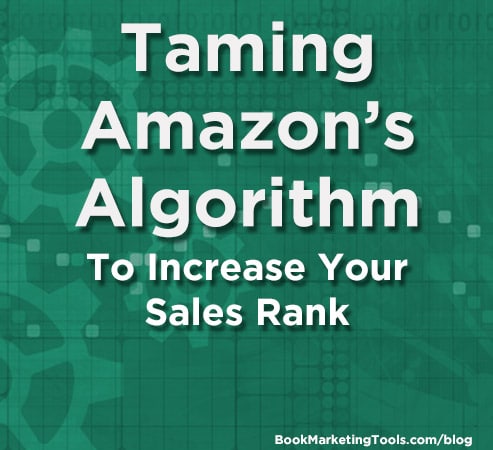As a closely guarded secret, Amazon’s sales rank algorithm remains a perpetual source of confusion and myth. Amazon won’t disclose their proprietary algorithms, but thanks to some clever analysis by indie authors, that formula has been reverse engineered. And once you understand that formula, the quirks of sales rank make much more sense, and you can use them to your advantage.
Amazon’s Secret Algorithm
The basics of Amazon’s algorithm are as follows:
- Sales rank is relative, and changes in rank may be due to the performance of other books
- Higher sales rank does not mean higher overalls sales
- It takes half as many sales to sustain a rank as it does to initially hit it
- A launch day blitz may briefly attain a high sales rank, but steady, organic growth will sustain it
- Pre-orders increase visibility and jump-start your book’s sales rank
- Kindle Unlimited downloads immediately affect your sales rank, regardless of whether they are read
What does all this mean for your marketing?
You need to be running some form of significant promotion monthly and rotate that around your library. Have each of your books on sale, countdown deal or giveaway each month. Advertise the promotion, to make the most of it. And be sure to have a big push for your “Flagship” titles once every six months, or they could die away.
Amazon ads, Google Adwords, and FB ads can also help keep a steady stream of sales to help build “traction” inside the algorithm.
Why is this important? Because the more “banked” sales you have, the more responsive your title is to a sales push. As author Carolyn McCray explains, flagship title will rise much more quickly through the rankings under the exact same sales push than a younger title with less historical sales to its credit. And the difference can be huge. McCray mentions that her better-selling titles can rise as much as quadruple the rankings than a less selling one – with the same amount of units sold. The key factor is long-term sales and this “traction” you have inside the algorithm.
You can think of Amazon’s algorithm as an equation that is constantly downgrading your chances at getting into the alsobot queue – that list of books under each title page that reads, “Customers who bought this also bought…” This is the single largest sales source on Amazon, and you need to keep reminding the algorithm that you can sell enough books to keep those alsobot slots alive. So, run strategic promotions to both maximize your ROI and keep the algorithm happy.
But this also means that you need to write a lot. You need at minimum 12 books/collections out to really make a go of this, and even more is better so that you can constantly have marketing promotions in the mix.
Still, volume alone does not sell books. No one will talk about your book if they can’t find it. The vast majority of people on Amazon find their books through the alsobot and the bestselling lists. Both of which are predicated on you selling enough books to keep your name out there.
This doesn’t happen by magic. It happens by promotion. And promotion is only successful if you understand how the algorithm works!
Nicholas Rossis loves to write. He has published Runaway Smile, a children’s book, and the best-selling epic fantasy series, Pearseus. The fourth book in the series is currently edited, and expected to be released in early 2015. Nicholas lives in Athens, Greece, in the middle of a forest, with his wife, dog and two very silly cats, one of whom is always sitting on his lap. The best way to reach him is on his blog, www.nicholasrossis.me, where you can read much of his work for free.

